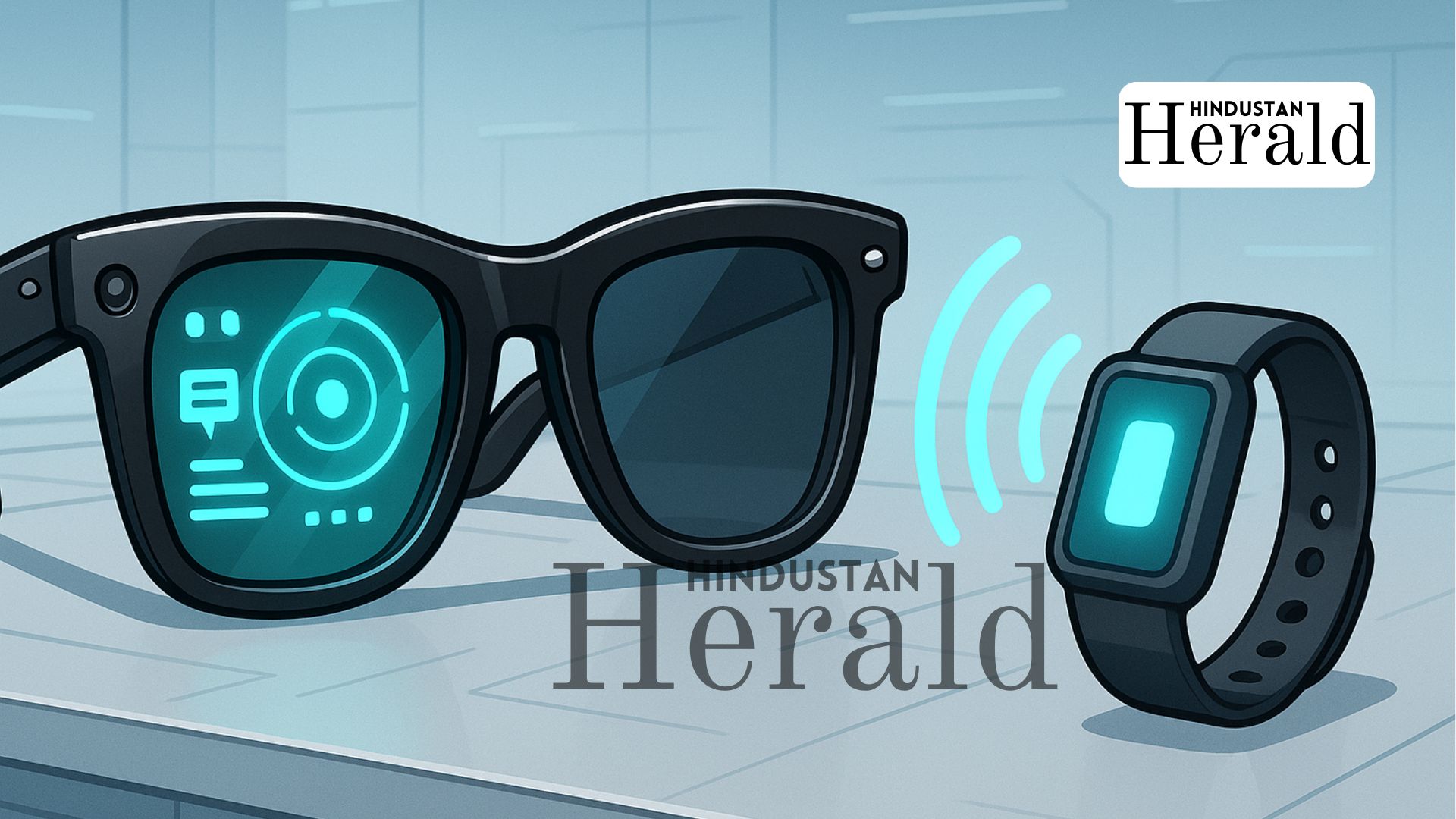New Delhi, September 18: Meta has a new pair of glasses it wants on your face. They look like Ray-Bans, they sound like Ray-Bans, but they are quietly trying to replace the phone in your pocket. Called the Ray-Ban Display, the $799 smart glasses come with a tiny screen built into the right lens and a wristband that reads the flicker of your muscles to control it.
The company pulled the covers off the device at a flashy launch in California late Wednesday. The pitch was sweeping, with Meta executives framing the glasses as a stepping stone to “superintelligence.” The reality, at least on stage, was messier. Reuters reported live demos faltered, with the glasses occasionally struggling to deliver what was promised. But glitches aside, the reveal is a big moment in Meta’s long, bruising effort to convince the world that we are headed toward a future where we will not need phones at all.
A Screen Hidden in the Glasses
On paper, the hardware sounds impressive, if a little niche. The display is just 600×600 pixels, with a field of view smaller than a credit card held at arm’s length. Still, it refreshes fast enough at 90Hz and can crank its brightness from dim indoor levels up to a retina-searing 5,000 nits. A 12-megapixel camera, five microphones, and open-air speakers are tucked neatly into the frames, making the glasses feel less like a prototype and more like an actual consumer product.
Battery life is what you would expect from something this small: about six hours of mixed use, or up to 30 hours if you keep recharging them in the collapsible case. The wristband, officially called the Neural Band, is arguably the more futuristic bit. It uses electromyography (EMG) by reading tiny signals from your wrist muscles to let you pinch, swipe, and flick your way through menus without touching a screen. Meta claims it can run for 18 hours and even survive a dunk in water.
Everyday AI in Your Line of Sight
What does all this add up to? Meta’s sales pitch is straightforward: practical AI, right where you are looking. You can ask for step-by-step cooking instructions, get real-time captions and translations during conversations, follow navigation arrows while walking, and peek at incoming WhatsApp or Instagram messages. Music controls are tucked into the gesture system.
The company is also eager to show that it has learned from past mistakes, most notably Google Glass. The display is designed so that less than 2% of the light leaks out, which means the stranger across from you probably will not notice you are watching something. That is a deliberate nod to privacy concerns that once made early wearables the butt of jokes and even bar bans.
A Pragmatic Turn for Meta
For Meta, this launch marks a shift in tone. The company has spent years chasing grand visions of fully immersive AR headsets, most of which remain either in labs or in prohibitively expensive products like Apple’s Vision Pro. By contrast, the Ray-Ban Display is meant to be worn in daily life without looking ridiculous. It is a bridge product, not quite science fiction, but just futuristic enough to feel different.
The Guardian described the move as a “pragmatic pivot,” and it makes sense. Meta’s Reality Labs division has been burning billions with little to show in the way of adoption. These glasses, co-branded with one of the world’s most popular eyewear labels, may finally give the company a way to put AI into people’s lives without asking them to strap a computer to their faces.
Not Yet for India
There is a catch, though. The glasses launch in the US on September 30 at Best Buy, LensCrafters, Sunglass Hut, Ray-Ban stores, and select Verizon outlets. Canada, France, Italy, and the UK will get them early next year. India, despite being one of Meta’s biggest user markets for WhatsApp and Instagram, is not on the initial list.
That is disappointing but not surprising. Wearables in the $800 range still sell in small volumes here, and Meta will likely test its luck in Western markets before opening sales in places like Delhi or Mumbai. Given the mix of fashion appeal and tech curiosity in Indian metros, it is hard to imagine they will not eventually arrive, just not this year.
A Long Road Ahead
Meta is not alone in chasing this dream. Apple, Google, Samsung, and even Chinese firms like Xiaomi are experimenting with similar ideas, betting that we will eventually ditch the constant screen-staring for something more seamless. But the road is long. Google Glass failed spectacularly, not because it did not work, but because it made people uncomfortable.
That is the challenge Meta faces now: not just building technology that functions, but technology people actually want to wear in public. Partnering with Ray-Ban gives the project a huge head start on style, but style alone will not erase concerns about surveillance, distraction, or the social awkwardness of talking to an invisible assistant.
For now, the Ray-Ban Display glasses are less revolution than experiment. They are not replacing your phone, not yet. But they are an important test of whether wearable AI can break into the mainstream. If they succeed, they may mark the slow beginning of life after the smartphone. If they flop, they will join a long list of futuristic gadgets that felt exciting in launch videos but never quite belonged in the real world.
Stay ahead with Hindustan Herald — bringing you trusted news, sharp analysis, and stories that matter across Politics, Business, Technology, Sports, Entertainment, Lifestyle, and more.
Connect with us on Facebook, Instagram, X (Twitter), LinkedIn, YouTube, and join our Telegram community @hindustanherald for real-time updates.
Tech writer passionate about AI, startups, and the digital economy, blending industry insights with storytelling.






